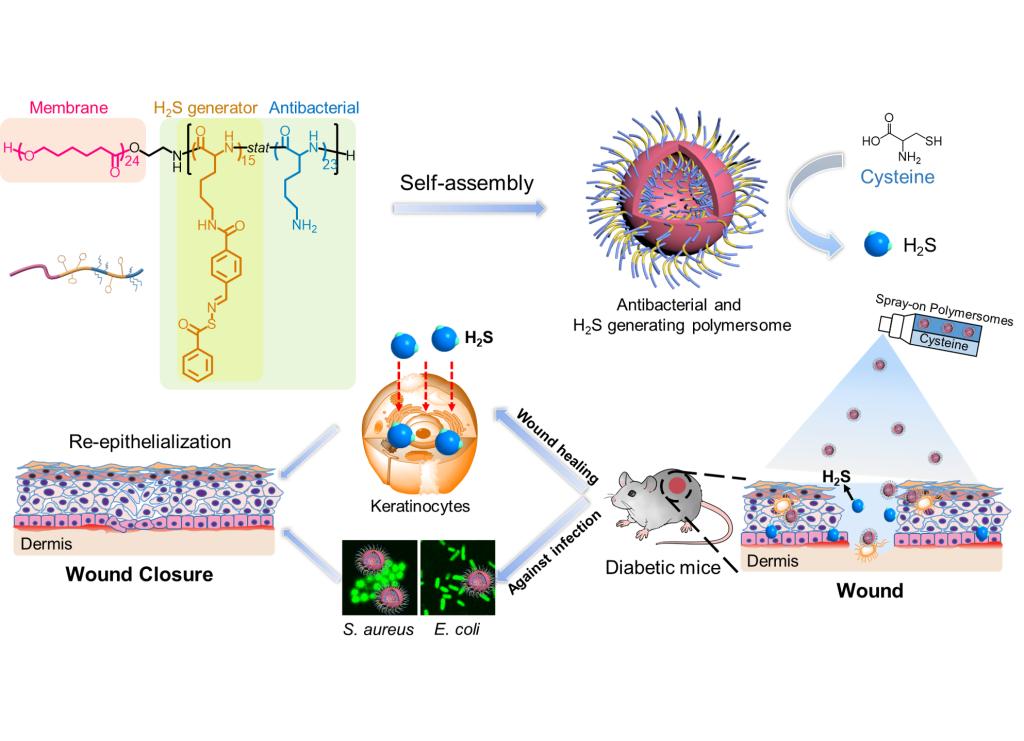Polymersome Wound Dressing Spray Capable of Bacterial Inhibition and H2S Generation for Complete Diabetic Wound Healing
作者:Liu, D. Q.; Liao, Y. Y.; Cornel, E. J.; Lv, M. C.; Wu, T.; Zhang, X. Y.; Fan, Z.*; Du, J. Z.* 时间:2021-10-14 点击数:

Abstract
Diabetic wounds are difficult to heal due to recurrent bacterial infection, decreased proliferation, and migration of epidermal and endothelial cells. This is related to impaired leukocyte function and low blood concentrations of H2S in diabetic patients. Herein, an antibacterial polymersome-based wound dressing spray was demonstrated for complete diabetic wound healing. The designed polymersome was self-assembled from poly(ε-caprolac-tone)24-block-poly[lysine15-stat-(S-aroylthiooxime)23] [ P C L24-b-P-(Lys23-stat-SATO15)], where PCL is the hydrophobic membrane-forming block and P(Lys-stat-SATO) acts as a hydrophilic stabilizer block. The polymersomes can penetrate and kill Gram-positive and Gram-negative bacteria because of the electrostatic interaction induced by the antibacterial P(Lys23-stat-SATO15) block. Furthermore, the SATO segments are capable of long-term H2S generation by reacting with cysteine (up to 12 h). This promotes proliferation, migration of epidermal and endothelial cells, and angiogenesis. Overall, this polymersome-based wound dressing spray acts as a bacterial inhibitor and H2S generator and offers a fresh insight into the effective treatment of diabetic wounds.
文章链接:Chemistry of Materials 2021, DOI: 10.1021/acs.chemmater.1c01872.